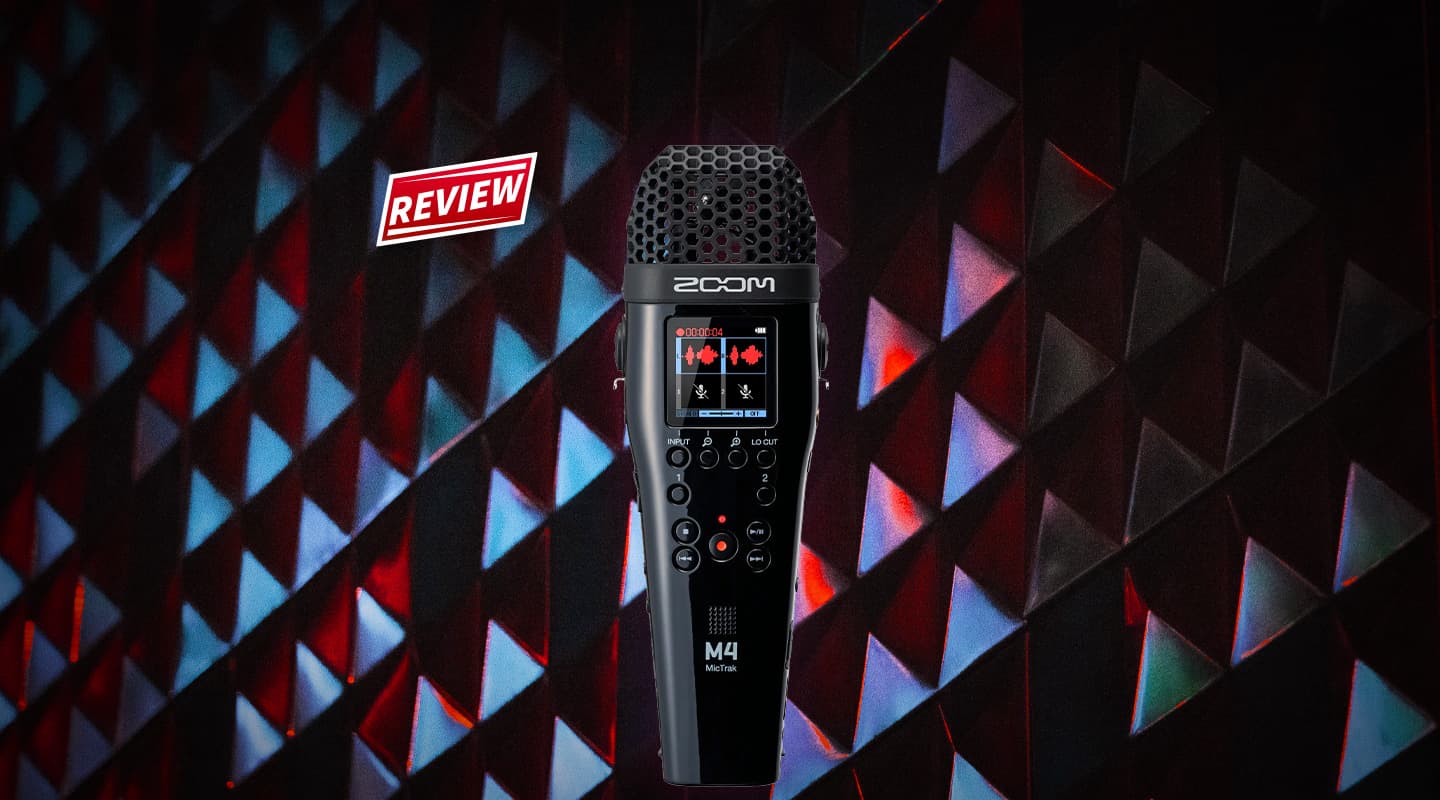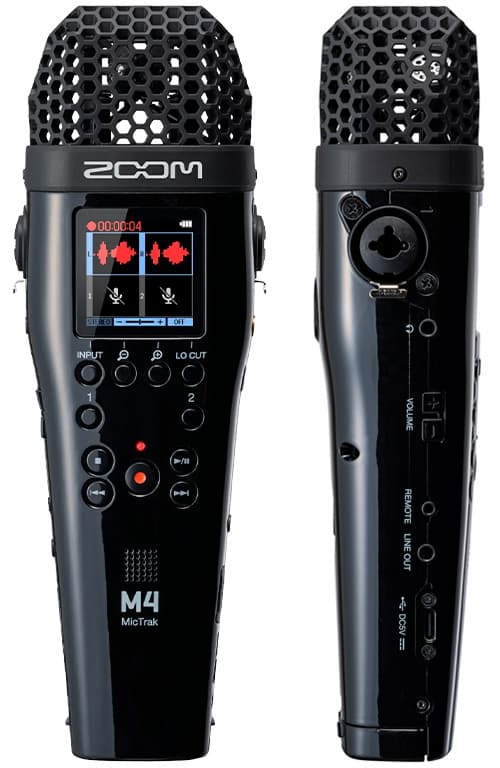
Review: Zoom M4 MicTrak
A X/Y stereo mic and two addition mic inputs in a handheld format, with 32-bit recording and timecode.
Good things come in brown paper parcels. This is what I’ve come to learn from Zoom, which continues its recent habit of plain cardboard packaging. The contents of the box are also simple — the unit itself, a thin material cover for the microphones and a small quick tour guide printed on paper. Minimal.
The unit is of a tough polymer construction and looks to be robust enough and keeps the M4 lightweight, which is important for a handheld unit of this type.
It has an unusual battery caddy that holds 4 x AA batteries in a pattern that slides into the unit and then has a locking screw on the back — a good solution to ensure the batteries don’t inadvertently fall out. The specs indicate that the four batteries provide 18 hours of operation which is solid for a unit like this.
The windscreen cover that comes with the unit is so thin it feels more like a dust jacket. I will certainly be putting that to the test later in the review.
FIRST 32-BIT IMPRESSIONS
32-bit recording is an incredible format. In theory, it provides a far, far greater dynamic range than you’ll ever need, so peaking and digital ‘overs’ are a thing of the past — in fact, Zoom’s 32-bit products don’t even come with gain controls.
For my particular project, I needed to record the sound of coins moving and sliding like they would in Smaug’s dragon hoard. I decided to treat the M4 with no mercy — just ‘point and shoot’, without any precautions to ensure the recording quality. I set up in the middle of my lounge room with the coins piled on a towel, and I didn’t even bother to switch off the heater fan, so I knew there was a risk of sound contamination.
To my surprise and the M4’s credit, its built-in mics dealt with this scenario very well. I often wax lyrical about Zoom’s mic preamps (the M4 uses the same pres as Zoom’s pro-grade F Series); they’re really very good, and, combined with good microphones, these Zoom recorders are capable of capturing whisper-quiet sounds. But my test proved that even the M4’s built-in mics will get the job done. Certainly, if I amplified the recording loudly enough, I could hear the heater fan in the background, but for my project, at the levels I needed, it wasn’t audible.
LET’S HEAR IT FOR THE NOISE
I was intrigued by the gossamer-thin windshield. It feels like it should be too thin to be effective. Typically, when I need to test for wind noise, nature gives me two or three days of dead calm. The BOM should hire me out. So it was with my time with the M4 — not a breath of wind. To simulate wind noise I swing the device back and forth like a can of billy tea. Pleasingly, it generated no wind noise at all. This is in stark contrast to a device I reviewed last year where any movement of any kind created wind noise against the built-in mics — a very undesirable trait in a handheld device. Conversely, the M4 scores very highly in this regard.
Now to the subject of handling noise. Like any handheld device with microphones onboard there’s a degree of handling noise. My initial impression was that the M4’s handling noise was about on par with the original H series. But after I took time to compare the M4 with the H4N, H1 and the original H4, the M4 performs considerably better in this regard. If you want to avoid handling noise altogether, then don’t handle the device. So nothing beats using external mics — which is something I’ve been doing with the Zoom F6 and F3 recorders for some time now.
The inclusion of a built-in normalisation function is nice, but I’m dubious as to how popular this feature might be. Many digital devices include the ability to edit and manipulate the recordings internally, but in the decades of location sound recording I have never had recourse to such features. I have a range of software I use for various steps of production, and I suspect most other users would be the same. That said, there may be a cohort of in-the-field, in-the-recorder editors I don’t know about. If that’s you, make a comment in the section below!
NEED TO KNOW
Zoom M4 MicTrak
Stereo Microphone & Recorder

I often wax lyrical about Zoom’s mic preamps; they’re really very good
EVOLUTION OF A DYNASTY
The M4 is a worthy addition to Zoom’s Handy Recorder family — a category it invented. A unit with built-in stereo mics, and inputs for two external microphones is exactly what I purchased about 15 years ago. The H4 was revolutionary at the time and mine got an incredible amount of use. The inclusion of the timecode generator shifts the focus (or at least the broadness of the appeal) of the M4 into film and TV production, and the 32-bit capability ensures its usefulness in a wider range of environments than the H4. My work is focussed on sound effects creation and game audio, so timecode is not something I need to concern myself with. But the standards have existed for years and the ability to use timecode with this device is sure to be attractive to many users.
Several generations of evolution of Zoom’s mic preamp technology; the inclusion of timecode; and a familiar design allows the M4 to compete in the modern digital recorder market, and continue to enjoy great success.



























RESPONSES